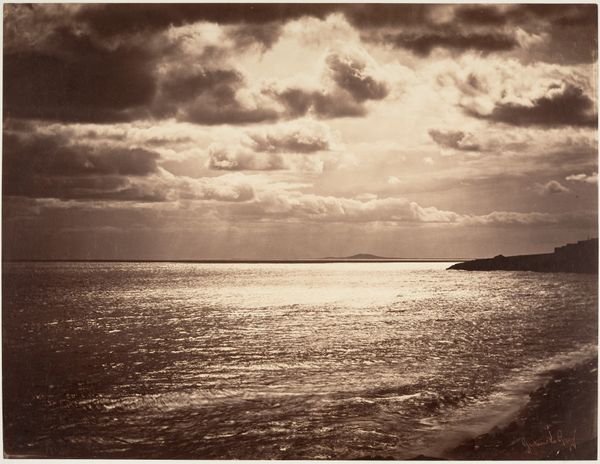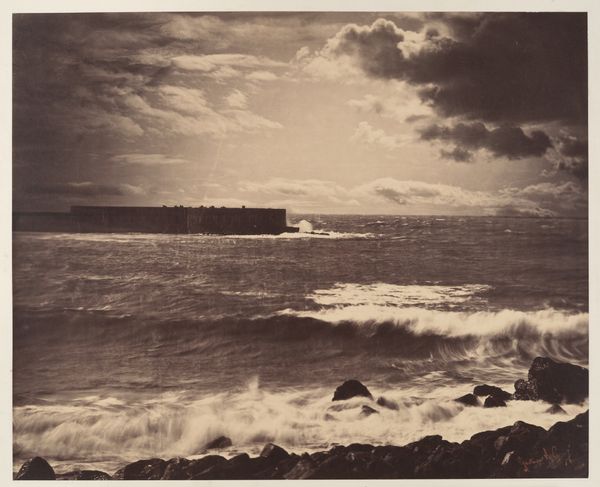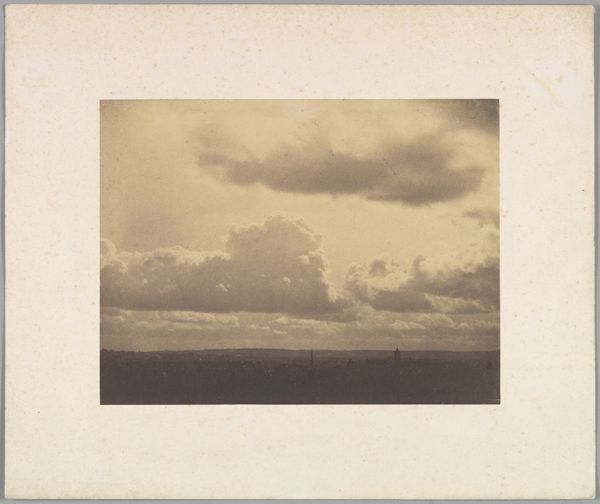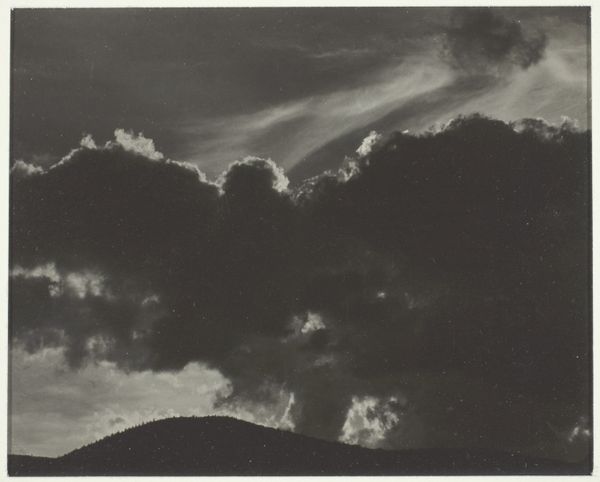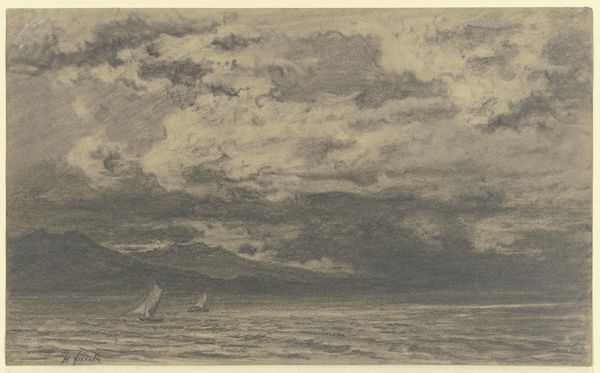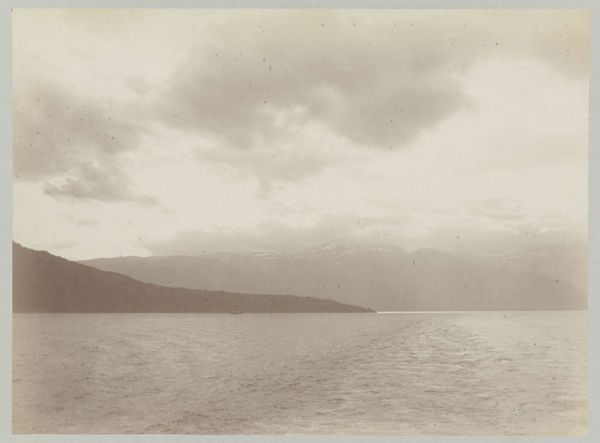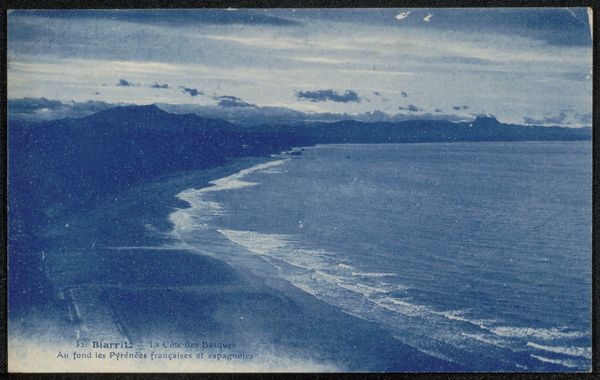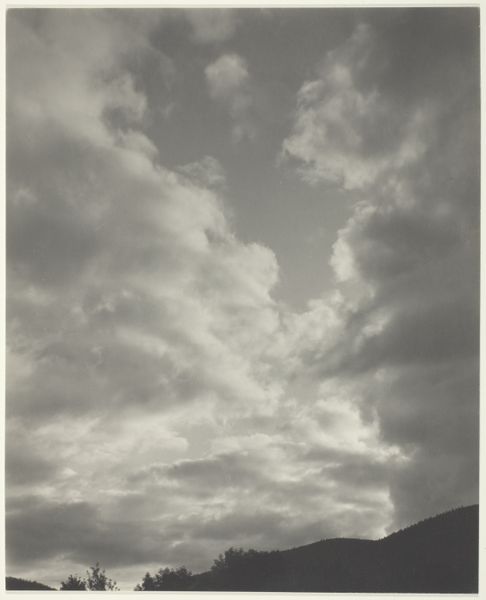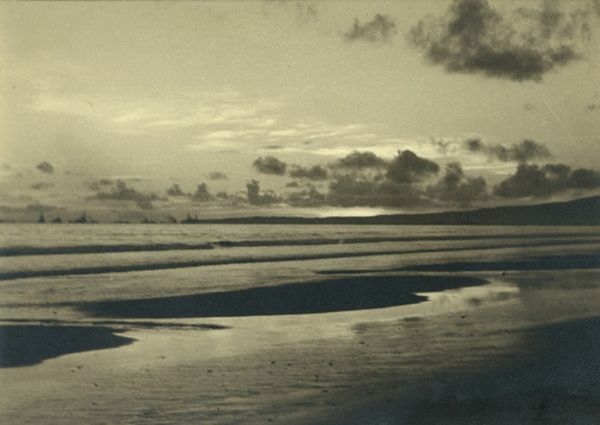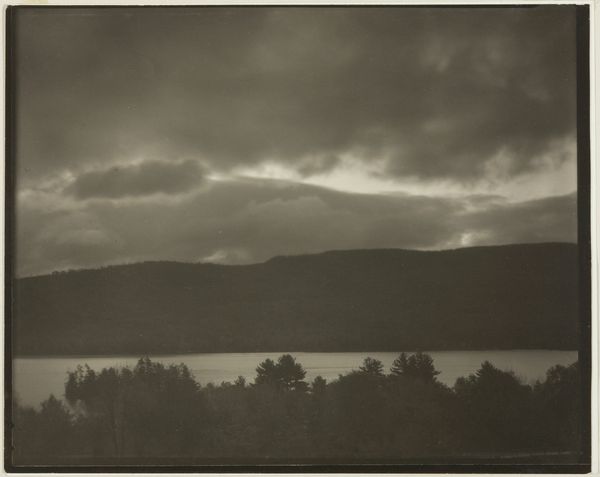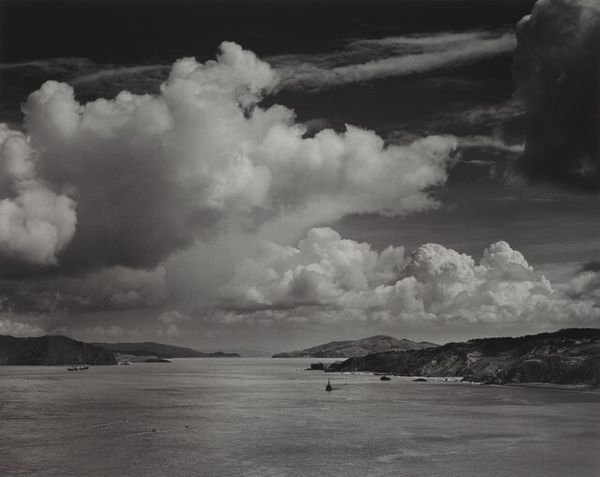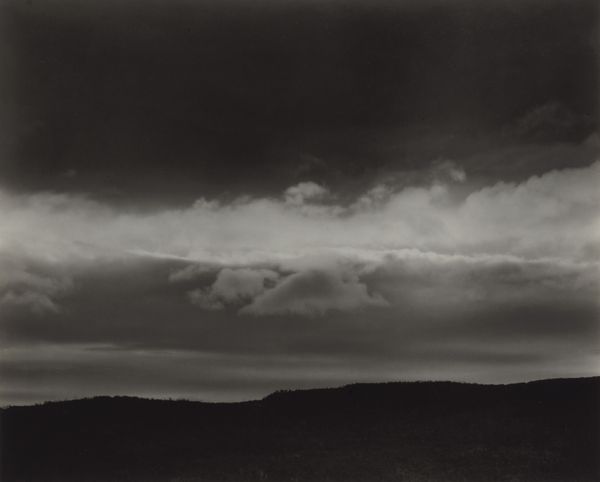
Dimensions: 31.8 x 40.9 cm. (12 1/2 x 16 1/8 in.)
Copyright: Public Domain
Editor: Right now, we’re looking at Gustave Le Gray’s “Mediterranean with Mount Agde,” taken in 1857. It’s a gelatin-silver print, and what strikes me immediately is the dramatic sky. What can you tell us about it? Curator: This photograph is fascinating when we consider the period in which it was made. Le Gray was working in a time where photography was emerging but facing technical limitations. Note that the sky and the sea were actually taken from different negatives and combined because the technology could not handle the vast difference in lighting! Editor: Wow, really? It looks seamless. What drove him to create composite images like this? Curator: He and others felt strongly that photography could and should be considered High Art. Le Gray strategically combined different negatives to overcome those technical limitations, producing an idealized, aesthetic image. It’s not just about documenting reality; it’s about manipulating reality to create an image aligned with artistic and cultural ideals of the time. Editor: So, it's almost a political act? Declaring photography's place in the art world? Curator: Precisely! The use of dramatic composition, similar to Romantic paintings, speaks to elevating the status of photography in mid-19th-century France. Think of how art salons and institutions at the time determined what was considered worthy of being seen. He's almost forcing photography into that conversation. Does this resonate with your view? Editor: Definitely! I didn’t realize how much the art world's structure could impact even something seemingly technical, like how the photo was made. I’ll never look at a landscape photo the same way again. Curator: Exactly! Consider how every artistic choice, from the clouds captured to their specific positioning, reflects this conscious effort to situate photography as a powerful medium within the broader visual culture and power structures of the 19th century.
Comments
No comments
Be the first to comment and join the conversation on the ultimate creative platform.
